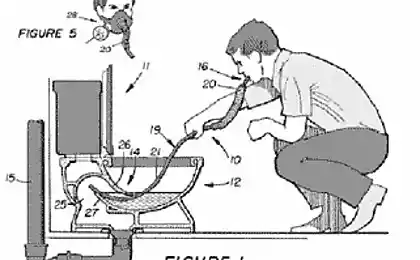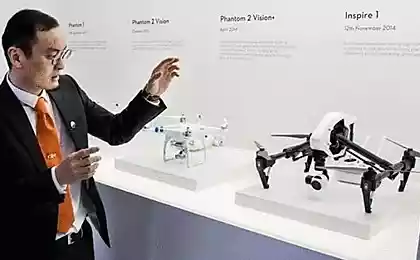1133
Telemedicine is changing the structure of the US market

Modern medicine has seen many technical achievements in its lifetime. Heart surgeries, which used to be performed on the open heart all day and required prolonged hospitalization, are now performed in the form of arthroscopic outpatient procedures for several hours. Tattoos can report vital signs, and contact lenses can monitor glucose levels. In the third world, you can get your AIDS test results in a few minutes for just a few dollars.
At a world-class hospital in Manhattan, to get to a doctor with a sprain, you still have to fill out a huge number of forms, wait for hours and pay cosmic amounts that are unlikely to be covered by your insurance.
With the same sprain, you can go to a CVS clinic or the like, which is actively using telemedicine, pay $80-$100 and walk out with a bandaged leg and prescription in less than an hour. Improving service levels is a challenge for the business model, not technology.
In search of better alternatives, Fast Service Clinics are becoming more accessible and ubiquitous (as they open in malls like Walmart, Walgreens and CVS). They offer a level of comfort, predictability and price transparency not available in conventional hospitals. Even Whole Foods got involved, and for good reason.
The full cost of visiting the first aid center is not known. Based on the available data, the average cost of visiting the SPT is $2,000. Even when visiting a network hospital, the patient may be required to pay unforeseen expenses.
Many commercial chains (including Walgreens and CVS) have ruled out the surprise effect for customers by listing their prices online. And, unlike a hospital that can charge hundreds or even thousands of dollars for a single analysis, most Walmart prices don’t exceed $40.
Fortune 500 companies and other large employers are also opening local clinics in an effort to cut health care costs and offer workers additional benefits. A little more, and treatment with a therapist or hospital will be more the exception than the rule.
Opportunity or danger? Much has been written about the dangers of such a transition for hospitals and doctors. The American Academy of Pediatrics has even expressed a very negative opinion about such clinics. However, this view is both naive and short-sighted. The traditional medical community shouldn't be struggling with this change. Moreover, they should embrace this trend as a way to survive in an evolving field in which they will profit from their results (rather than their actions) and in which they will have to provide services through networking.
The battle for better service Hospitals began to realize they could only get into the game by offering a similar level of comfort and transparency. Novant Health decided to capitalize on growth opportunities by partnering with Target and opening fast-care clinics in Target centers, where patients are taken in by practitioner nurses from Target under the supervision of doctors from Novant.
Temple University Health System is another organization that follows this model, opening ReadyCare clinics in Philadelphia. One by one, some hospitals are investing in the ecosystem to try to stay as close as possible to customer trends and preferences (for example, UnitedHealth Group acquired Audax).
Despite all the advances in the treatment and development of medical devices, providers of such services have never been at the forefront of progress, but the situation is gradually changing. In the coming years, as telemedicine begins to deliver on its promise of continuous service, fast-care clinics will become the driving force and critical partner of virtual health care providers.
Telemedicine companies like WorldClinic, which provide continuous service through virtual systems and rarely see patients live, will push a network of quick-care clinics to work in labs and dispense medicines to patients. The network also provides conveniently located wards that regularly screen patients who have been assigned additional treatments or chronic conditions. Through such a network, continuous virtual delivery of health care can become the norm in how health care is delivered and delivered.
Convenience, lower cost and transparency are the main advantages that all quick-care clinics have. How are they different? How to choose if you are an investor or a customer?
Here are a few key factors to consider:
Wide range of services. Clinics need to offer more than just diagnosis and treatment. Pay attention to those that include services such as monitoring for chronic conditions and laboratory tests. With new offerings such as smoking cessation assistance at CVS and chronic diabetes and hypertension care at Walgreens, it's easy to imagine physiotherapy and weight loss groups as clinic services.
Adequate level of service. Clinic staff should undergo appropriate training and certification, and be aware of the latest treatment protocols. The clinic should also communicate with physicians and professionals (e.g. through a website or video conferencing), providing support for a wider range of problems and more complex cases.
Electronic integration with health networks and electronic medical archives (EHR). EHR systems are becoming the foundation of patient continuity. All records are available online and include information from service providers, whose number is growing every day. CVS already provides access to data from more than 40 healthcare systems.
Internet devices. Clinics should make the most of modern technologies, from diagnostic devices that provide crop results and laboratory tests to wearable devices integrated into AppleHealth. In addition to simple convenience and cost-effectiveness, these devices and systems allow clinics to collect standardized patient health information and monitor chronic conditions.
There are more and more patients and fewer doctors who can help them. The Association of American Medical Colleges (AAMC) predicts that there will be a shortage of 130,600 doctors by 2025. Emerging fast-care clinics are confidently battling this trend. Health care providers have the opportunity to reduce costs and improve services by following the trend of fast-care clinics through direct investment or partnerships.
It won’t be long before doctors work fully virtual, relying on video technology, internet-connected medical devices, electronic medical archives, and a network of clinics to ensure that patients are treated effectively in the most effective way possible and that the best patient experience is guaranteed.























